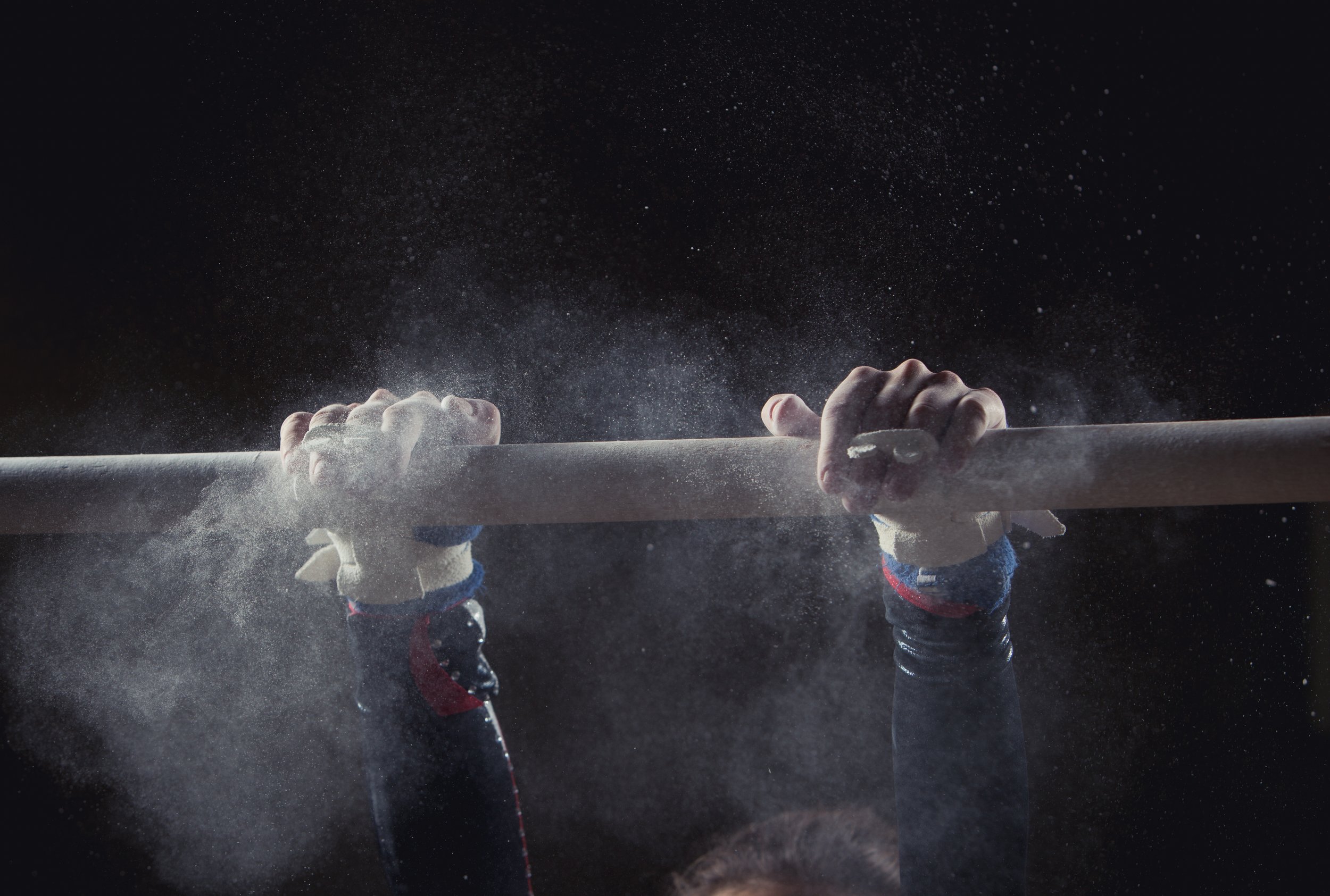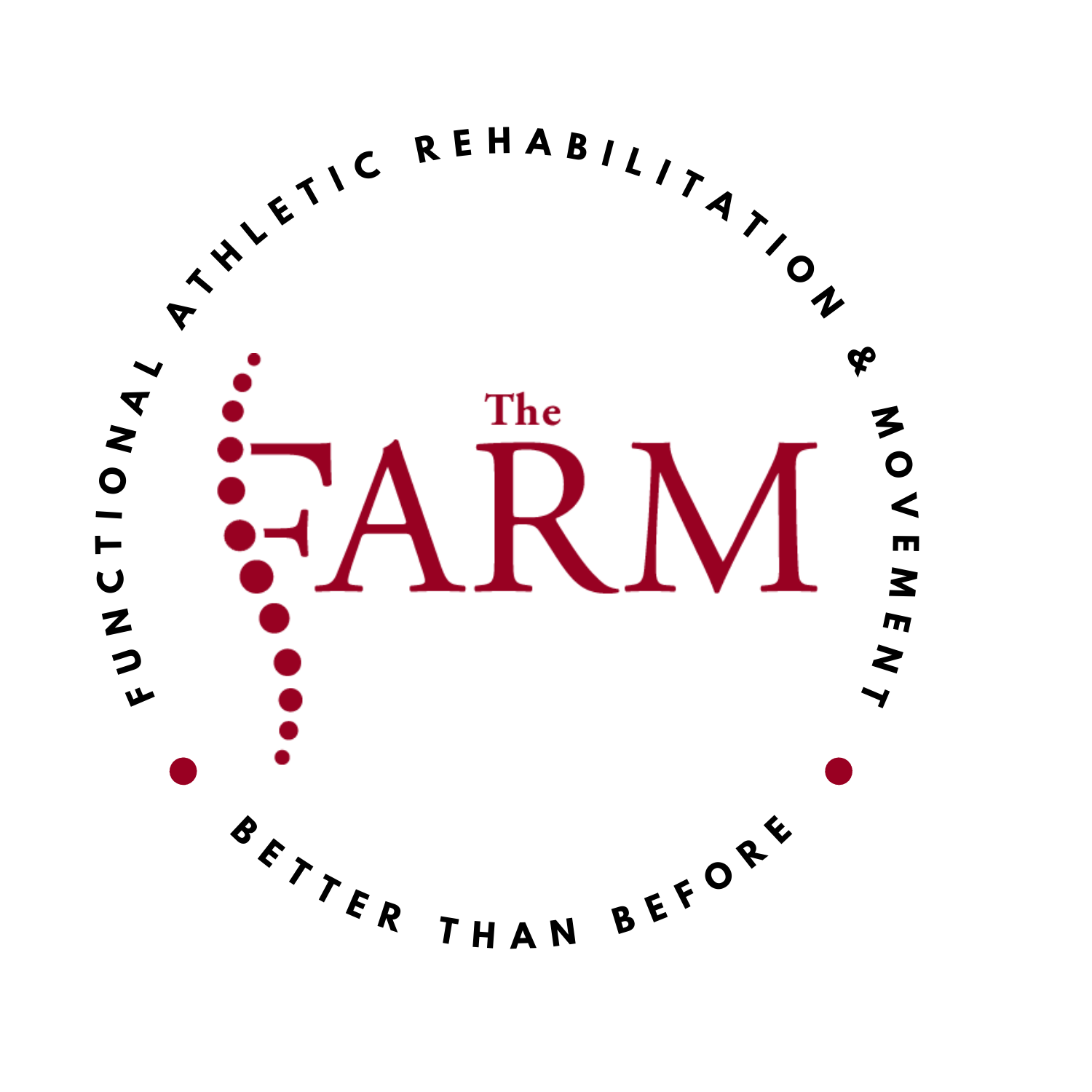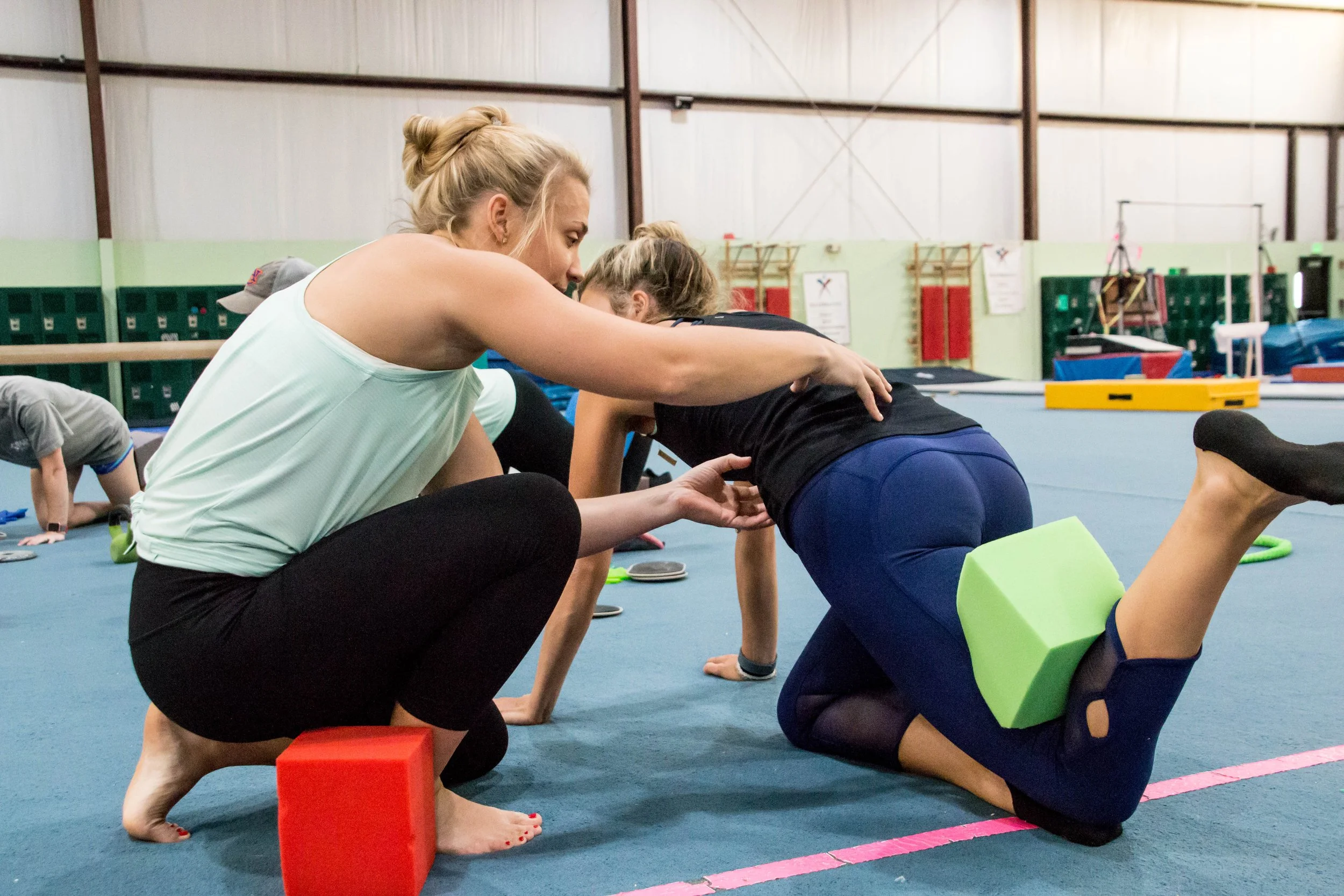
Gymnastics Injury & Performance Care
Birmingham’s choice for chiropractic gymnastics injury treatment.
Dr. Sloan Beard, DC, MS, CCSP is the creator of the Gymnast Fix, which is a prehab and rehabilitation program geared towards educating coaches and improving injury outcomes in gymnasts.
-
Gymnastics stands as one of the most demanding sports—its athletes navigate perilous heights, push physical limits, and execute mind‑boggling feats of strength and coordination. Yet, behind each breathtaking tumble or precision-balanced beam pose lies a meticulously orchestrated ecosystem of care focused on optimizing health, preventing injury, and maximizing performance. At the center of this multidisciplinary system is The FARM—an innovative center dedicated to gymnastics care, spearheaded by chiropractor and functional rehabilitation expert Dr. Sloan Beard.
Over the next 1,500 words, we’ll explore how The FARM’s integrative model—built on chiropractic care, injury rehabilitation, strength & conditioning, and functional rehab—supports gymnasts at every stage of their journey. We’ll also dive deep into Dr. Beard’s expertise and unique approach to these athletes’ health. By the end, you’ll see how each component fits into a bigger picture of lifelong athlete wellness and peak performance.
1. Foundational Philosophy: Beyond Conventional Care
The FARM approaches gymnastics care not as episodic problem-solving—but as a continuum. Whether it’s a 6-year-old discovering tumbling, an elite competitor preparing for regional championships, or a seasoned gymnast navigating post-injury challenges, each athlete benefits from a customized program that spans:
Baseline spinal and biomechanics screening
Postural and movement analysis
Targeted corrective work
Empowerment through education
This framework emphasizes prevention, early detection, and sustainable performance—not just reactive treatment.
2. Chiropractic Care: Aligning Spine, Supporting Performance
At the core of The FARM’s model lies chiropractic care. Far from simply “cracking backs,” their approach includes:
Comprehensive Postural & Structural Evaluation: Gymnastics demands spinal flexibility, torso stabilization, and extreme joint loading. Dr. Beard meticulously assesses spinal alignment, pelvic orientation, leg length symmetry, and overall balance during posture and gait/screenshots.
Spinal Adjustments Tailored to Athletes: Rather than a one-size-fits-all protocol, adjustments target asymmetries caused by repetitive motion—vault takeoff asymmetry, beam rotation patterns, floor power imbalance. These precise corrections restore neuro-musculoskeletal efficiency and optimize movement execution.
Soft-Tissue Release & Instrument-Assisted Techniques: Techniques like Graston and Active Release Therapy (ART) are integral. Tight hip flexors, hamstrings, pec minor—common gymnastics stressors—are addressed to restore hackaday range and tension balance.
WHY IT MATTERS:
Proper spinal alignment ensures fast, efficient neural pathways and distributed loads through core structures (vertebrae, discs, ligaments). For a gymnast, even minor asymmetries can translate to big inefficiencies—lost power, reduced precision, or increased injury risk.3. Injury Rehabilitation: From Micro-Strains to ACL Tears
Despite best efforts, gymnastics injuries occur. The FARM’s model shines in how it navigates these setbacks:
Early Triage & Baseline Documentation: If an injury occurs—say, a wrist sprain or ankle hyper-flexion—the first visit focuses on examination, severity grading, and imaging coordination when needed (e.g., MRI for suspected ligament tears).
Collaborative Case Management: Dr. Beard engages orthopedic colleagues, radiologists, athletic trainers, and coaches to create a unified plan.
Phased Rehab Protocols: Each rehab phase is carefully progressed—pain/inflammation control → range-of-motion restoration → strengthening → sport-specific drills.
Neuromuscular Reeducation: For rotational landings, flip entry, or beam balance, built-in drills enhance proprioception and reflexive stabilization to decrease re-injury risk.
Advanced Manual & Instrument Therapy: These techniques accelerate tissue healing—mobilizing adhesions, reducing nerve irritability, and restoring part-to-whole coordination.
4. Strength & Conditioning: The Prehab that Powers Performance
Gymnasts naturally possess power, agility, and body control. Yet structured strength and conditioning unlocks consistency and durability:
Periodized Programming: The FARM aligns training cycles to meet the needs of competition prep, off-season development, or rehab integration. Workloads are carefully progressived to avoid overtraining.
Foundational Core & Control Training: Stability under load—pillars such as dead bugs, plank progressions, pallof press, and loaded carries—lays the foundation for dynamic movements like tumbling.
Functional Strength Movements: Concentric/eccentric strengthening contracts are applied to joint-specific muscles: shoulder stabilizers, hip extensors, ankle dorsiflexors. These are performed using kettlebells, resistance bands, and bodyweight drills to mirror competition muscular demands.
Plyometrics & Reactive Training: Jump-height, reactivity, and plyometric drills—such as box depth jumps, drop land landings, and reactive bounds—are orchestrated at specific timepoints to enhance elasticity, eccentric control, and reactivity.
POWER + RESILIENCE: This training does more than even performance—it builds structural resilience. A stronger muscle-tendon complex protects bones, joints, and ligaments from high-impact forces.
5. Functional Rehabilitation: Training Athletes to Be Gymnasts, Not Patients
Where the care model truly shines is in converging rehab and sport-specific training. Consider:
Custom Skill-Specific Drills: Returning from shoulder tendonitis? Athletes reintroduce hollow and arch positions—progressing from static holds, to small arm circles, to full kip drills.
Gym-Like Environment Exposure: Rehab transitions from the treatment table to floor mats, beams, and bars—emphasizing correct technique, confidence rebuilding, and contextual movement control.
Monitoring Tools in Real-Time: Balance apps, video analysis, and pressure plates provide feedback on landing quality and symmetry—data used to finetune drills and target asymmetry.
Return-to-Play Criteria: Dr. Beard’s phase‑2 passes aren’t checklist-based—they revolve around demonstrated strength ratios, pain-free execution of training skills, and coach-validated form replication.
This functional rehab pipeline dramatically reduces the risk of re‑injury while supporting confidence and technical consistency upon return.
6. Dr. Sloan Beard: Expertise Beyond the Clinic Door
No model is effective without its designer. Dr. Beard’s background sets him apart:
Decades of Gymnastics Exposure: A gymnast himself from a young age, he understands the sport’s mental and physical nuances. This athlete-centered lens informs every treatment.
Specialized Certification: With advanced credentials via the Titleist Performance Institute (Level 2 in Medical Muscle Imbalance Specialist / Titleist Pro), Dr. Beard is trained in biomechanics, sports-specific movement, and tissue recovery.
Academia & Research: He has contributed to peer-reviewed journals on gymnastics-related musculoskeletal injury and has lectured at state-level gymnastics medical programs.
Collaboration with Coaches: In designing warm-up routines, pre-practice adjustments, and load-monitoring strategies, Dr. Beard integrates with coaches as partners—not just providers.
Long-Term Athlete Planning: For gymnasts with long competitive trajectories, he crafts four-year athlete development plans—coordinating chiropractic care, strength cycles, skill development, and injury risk management.
RESULT? Greater success, fewer injuries, more confidence.
7. Case Study: A Gymnast’s Journey Through The FARM Model
_“Pearl”*, 14-year-old Level 10 gymnast – sprained right ankle during tumbling...
Day 1: Chiropractic evaluation reveals joint restrictions in lumbar spine, pelvis asymmetry, and hypertonicity in hip flexors. Adjustment + soft tissue release → Pain down from 7/10 to 4/10.
Week 1: Swelling subsides; range of motion improved. Initiate gentle proprioceptive drills, bilateral banded ankle stability work, partial weight-bearing drills on soft mat. Continued spinal care maintains core-integrated alignment.
Week 3: Begin weighted lunges, hip-hinge work, calf and fibularis eccentrics, and minisquats. Maintain plyometric micro‑jumps in sagittal/horizontal planes (on-trampoline oversight).
Week 5: Start corner beam drills, bar kip supports, AND asymmetry test shows 10% stronger ankle dorsiflexion on left vs. right—balanced via unilateral training. Confidence increase reported by Pearl.
Week 7: Transition to full tumbling passes, executed without compensation. Coaches report beam work is sharper, takeoffs more explosive, and ankle stability remains intact.
Over a 7-week rehab, Pearl recovered fully—and left stronger in key movement metrics than before.
8. Why The FARM Model Works: Integration & Precision
No single component is magic. The FARM’s success comes through:
Continual Movement Feedback: Chiropractic care influences range of motion; strength training reshapes force capacity; functional rehab replicates skill demand. Channels all feed data into care adjustments.
Collaborative Coordination: Weekly check‑ins with coaches and trainers keep everyone aligned—and prevent overreach.
Athlete Empowerment via Education: Dr. Beard teaches athletes to perform self‑adjustment mobilizations, breathing-based core engagement, and loaded carry drills they can do at home.
Performance Data Tracking: Metrics on jump height, plyometric reactivity, symmetry under load, and proprioception are tracked to motivate athletes and shape intervention intensity.
9. The Road Ahead: Prehabilitation, Longevity, and Peak Performance
Even for uninjured gymnasts at elite levels, The FARM offers annual or seasonal screenings to identify:
Rotation asymmetries (e.g., off‑wind imbalance)
Strength imbalances between sides or core/vs extremities
Articulation limitations in ankles, elbows, spine
Using its integrated approach, The FARM closes these gaps preemptively—reducing injury risk and reinforcing technical execution.
10. Conclusion: A Model for Gymnastics Wellness
Gymnastics demands a balanced integration of mobility, strength, coordination, endurance, and structural resilience. The FARM's cohesive model—anchored in chiropractic care and bolstered by strong collaboration among strength & conditioning, injury rehabilitation, and functional sport-specific training—fulfills these requirements.
Much of the model’s power lies in the vision and expertise of Dr. Sloan Beard. His experience as both coach and clinician, combined with his science-based certifications and collaborative spirit, makes The FARM a standout: a place where gymnasts don’t just recover but thrive.
Key Takeaways
Chiropractic care at The FARM addresses structural alignment and soft-tissue imbalances.
Injury rehabilitation is staged, data-driven, and collaboratively orchestrated.
Strength and conditioning builds the physical capacity necessary for gymnastics’ extreme demands.
Functional rehabilitation reconnects the athlete with skill mastery and confidence.
Dr. Sloan Beard’s leadership brings an athlete-centered, performance-first focus to all levels of athlete care.
Whether you're a young gymnast finding your footing, an elite athlete aiming for college or national teams, or a coach seeking a holistic performance partner, The FARM stands ready. Their model doesn't just fix problems—it aims to build better athletes, stronger bodies, and more resilient competitors.




